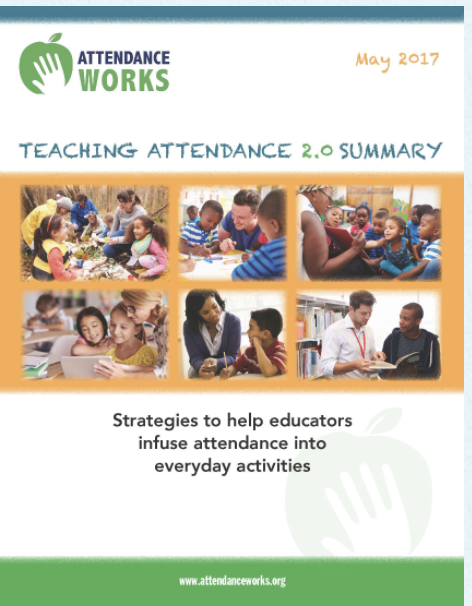Develop Staff Capacity to Adopt Effective Attendance Practice
While principals are crucial to launching the work, sustaining attendance improvement depends upon the support and buy-in of the school as a whole. Below are tips for how you can take action to build the capacity of your school to engage in this work.
Identify or Establish a Team to Address Attendance
Given the large number of responsibilities that typically fall on the prinicpal’s shoulders, it is important to identify additional staff who can help launch the work. Ideally this would include those familiar with attendance data, parent engagement activities, student behavior, family supports, as well as the ability to help engage other teachers. Each principal and school will need to determine whether this should be a team devoted exclusively to attendance or an existing team that has attendance added to its broader functions and responsibilities. This team should meet regularly to review the school’s attendance data and coordinate efforts to reduce chronic absence.
Develop an Initial Plan of Action
Conduct a school assessment with your team to develop a shared picture of strengths, challenges and opportunities for action and to identify what are the most critical next steps for putting in place effective practice.
Create a Tiered System of Supports
Ensure that your school has determined the best way to provide increasingly intensive levels of support if students do not respond to initial interventions or if it is clear that they are struggling with a serious challenge or traumatic situation. While teachers or volunteer mentors can notice when a student is starting to experience poor attendance, they also need to know what to do if the challenge at hand appears to be beyond their expertise and resources to address. All staff should be aware whom to contact to connect a student to needed supports and what increasingly intensive levels of intervention are available.
Data on chronic absence can be used to determine which students need additional supports. For further details on how to offer a more intensive, second layer of early intervention and prevention before resorting to legal action related to truancy, see this toolkit.
Invest in Professional Development
Everyone, from the teachers taking the roll to school nurses taking temperatures or security guards monitoring the hallways, can play a part in reducing chronic absence. Principals should develop materials and appropriate training to ensure that the entire staff is on board.
Dedicate a portion of your in-service training to discussing the importance of reducing chronic absence and what can be done. You can spell out the effects of missing too much school and share any data you have about patterns in your school. Also, be sure to share tools for messaging to parents at the start of the school year and at parent-teacher conferences, as well as tips for working with students. The Teaching Attendance toolkit offers special guidance for adding in a brief conversation about attendance into every parent-teacher conference so that teachers can applaud students for excellent attendance behavior while checking with those who are struggling. It recognizes that teachers are the first line of prevention and early outreach.
Tap Community Partners for Help
Many of the factors affecting chronic absence originate beyond the schoolyard, so community volunteers, non-profits and business leaders can be important partners. Principals play an important role in recruiting and engaging these community partners. Afterschool providers can be powerful allies in monitoring chronically absent students. Volunteers can help mentor students or safeguard children walking to school. Businesses can contribute prizes for incentives, as well as provide volunteers. Non-profits, especially those connected to parents, can convey the message that absences add up.

